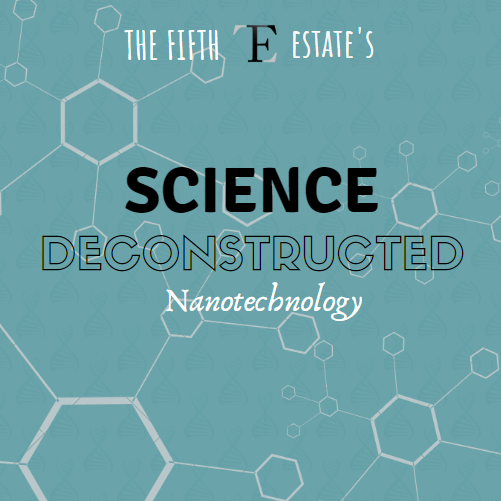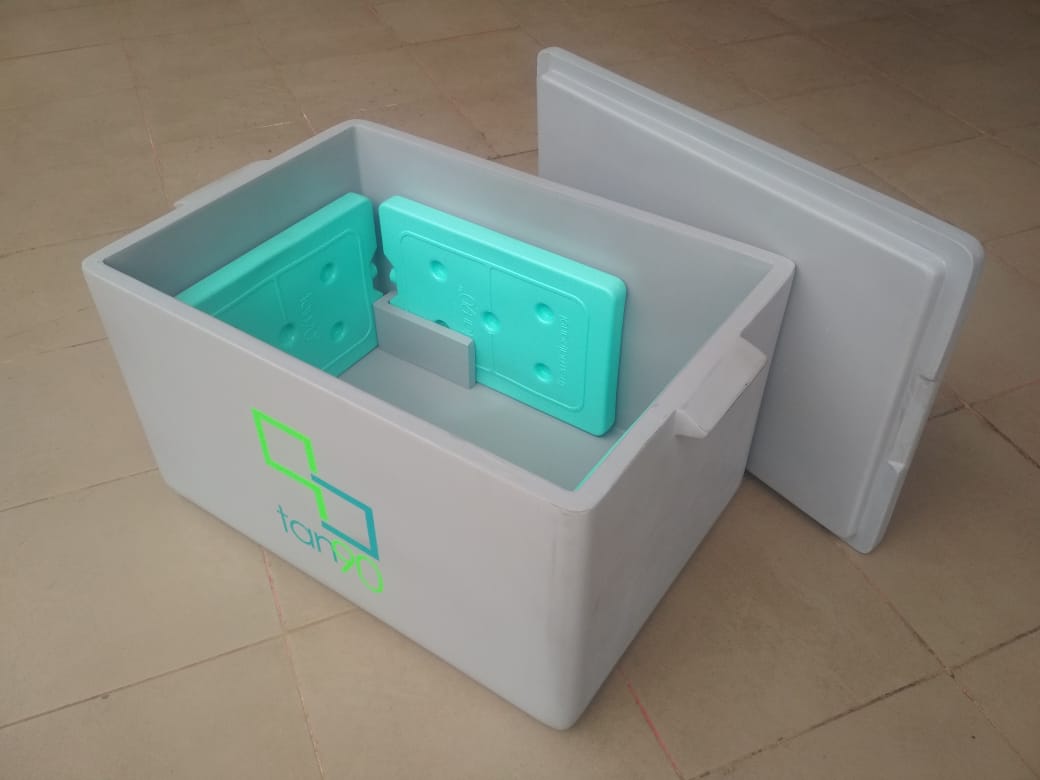All of us have heard about nanotechnology changing the world and being a field with a lot of scope. So, what is this entire furore about? What makes nanotechnology so great? As you may have guessed, nanotechnology deals with all things in the nano-scale. What makes this an exciting field for scientists is the fact that materials show very different properties at such a small scale.
A really simple example of this is gold! A solution of gold nanoparticles is red in colour, whereas the gold we see everyday around us is yellow. By studying different kinds of nanomaterials, we might be able to find a material that has a certain set of properties that is perfect for a particular purpose. This is an open area of research.


The biggest challenge when it comes to nanotechnology is the small scale at which all processes have to take place. The technology to engineer the same is still being developed. So, how do we develop an efficient way to tap this field to its fullest? How do we make nanomaterials with the exact combination of atoms that we want? This is another area of research in nanotechnology.
As we have seen, nanotechnology isn’t solely about producing nanomaterials, but this is a good starting point. Nanomaterials are produced using two major approaches – the top-down approach and the bottom-up approach. As the names suggest, the top-down approach deals with breaking down materials to the nano-scale and the bottom-up approach deals with building nanomaterials from smaller pieces.
Building Small
Let’s start off with the top-down approach. One popular top-down approach is mechanical milling. In this, bulk material in the micro-scale is ground to the nano-scale using strong mechanical shear force. Attrition devices are employed to facilitate this. These attrition devices basically work by exerting shear and impact forces on the material to be ground. One drawback of using mechanical milling is that due to the huge strain that the material is put under, it is virtually impossible to get defect-free nanoparticles. The particles obtained may also contain impurities.
One interesting bottom-up method in practice today is atomic or molecular condensation. This is usually used to make nanomaterials containing metals. In this method, bulk material is heated so that it vaporises. This vapour is passed through a chamber containing a gas. Due to collision with the gas molecules, the metal atoms undergo rapid cooling. This causes them to condense into nanoparticles. Another bottom-up method, which is much more intriguing, but hasn’t been implemented yet uses the concept of nanofactories. Nanofactories, as the name suggests are factories in the nano-scale.
Nanofactories work on the principle of mechanochemistry. Here, the nanomaterial is made by adding atoms to a surface. If you want to add an atom to the surface, you start with that atom bound to a molecule called a “tool tip” at the end of a mechanical manipulator. You move the atom next to the surface where you want it to end up and make sure that it has a weaker bond to the tool tip than to the surface. When you bring them close enough, the bond will transfer. This way, each atom is added to a precise location on the surface.
Can Nanotechnology Make It Big?
By placing atoms one on top of the other, atomically precise nanoparticles can be made. What if we can use this method to make objects for everyday use? These objects will be atomically precise. Talk about products without defects! In fact, most of us have already seen stuff made using nanotechnology, well maybe not in real life, but definitely in reel life.
The gauntlet used in ‘Avengers: Endgame’ *spoiler alert* to replace the ‘Infinity Gauntlet’ was made using nanotechnology and was called the ‘Nano Gauntlet’. This gauntlet had some unique features. The Nano Gauntlet could shift its nanites around and morph itself to accommodate different arm sizes. It could even seemingly repair itself, as the gauntlet appears less damaged in some later scenes after being initially badly damaged. The Nano Gauntlet’s nanites could also be transferred into different Iron Man armours made using nanotechnology. Iron Man uses this to transfer the nanites containing the Infinity Stones into his armour, therefore merging its nanites with his suit and safely transferring the stones.
There have been discussions suggesting that personalized nanofactories become a norm after the idea of nanofactories has been well established and they are made on a large scale. Thinking about it, it is just one nanofactory that has to be made. Following which, this nanofactory can be used to make other nanofactories and so on and there will be an exponential increase in their production. But making a nanofactory is not a cakewalk. We have to be able to control the movement of atoms to a great extent to be able to do it.
This being said, considerable progress has been made in the last few years. In 2016, the Nobel Prize in Chemistry was awarded to Jean-Pierre Sauvage, Sir Fraser Stoddart and Bernard Feringa for mastering motion control at the molecular scale. This was a huge breakthrough. They successfully made ring shaped molecules that could rotate independently and be used to run a molecular motor. The hope is that this can be used to make machines at the nano level and hence, fully functional nanofactories.

xkcd comics
Good Things Do Come in Small Packages
Nanotechnology has a wide range of applications. It can be an asset to any field that you can think of. Some of its applications are described here:
One field where nanotechnology’s potential contribution cannot be downplayed is in medicine. There are numerous applications of nanomaterials in medicine. One such application is in drug delivery. This involves the usage of drugs that can target only specific disease causing cells and leave the healthy cells unharmed. This might help in the reduction of some of the harmful side-effects of drugs. For example, prostate cancer is sometimes treated through radiation therapy. To reduce the damage caused by this, radioactive gold nanoparticles can be attached to a molecule that targets prostate tumour cells. Since the radioactive gold nanoparticles predominantly affect only the tumor cells, the healthy cells will be left unharmed.
With the need for clean, renewable sources of energy being greater than ever before, fuel cells have grown in popularity. But one of the reasons for fuel cells not being as widely used as other sources of energy is that scientists cannot find a safe, light and easy-to-transport material to store the hydrogen needed for the production of energy. Nanotechnology could solve this problem.
Researchers at Rensselaer Polytechnic Institute investigated the potential of storing of hydrogen in graphene (single atom thick carbon sheets). The principle behind the same was that hydrogen and carbon have a high bonding energy. The researchers further increased this bonding energy through plasma treatment and annealing. Since graphene is only one atom thick, it has the highest surface area exposure of carbon per weight of any material. High hydrogen to carbon bonding energy and high surface area exposure of carbon makes graphene a good choice for storage of hydrogen.
Nanoparticles can also be used to make tiny nano-sensors. These sensors will be able to detect the presence of even a small amount of a vapour or gas. Various types of detectors, such as carbon nanotubes, zinc oxide nanowires or palladium nanoparticles can be used in nanotechnology-based sensors. The sensors work by detecting changes in electrical characteristics, such as resistance or capacitance, when they absorb specific gas molecules. Since the sensor is so small, even a few molecules of the gas or vapour will be able to produce an observable change in the electrical property of the sensor. This will allow for an early alarm in case of a gas leak, for example.
Some Big Concerns with Going Small Safety Concerns
Everything has its pros and cons and nanotechnology is no exception to that. Now that we have seen the advantages it is time to see the threats it poses.
Nanotechnology has been gaining a lot of popularity lately and soon it will probably be seen in almost all spheres of life. When we consider nanoparticles, we have to remember that they are smaller than most things we are usually surrounded by. Being so small, they can cross almost any barrier. This includes some very important membranes in our body. If we are about to let nanoparticles play a dominant role in our lives, we should have the means to protect ourselves from its ill effects too. The potential effects of releasing nanoparticles have to be carefully studied.
The other issue is ethical in nature. The idea of personalised nanofactories is innovative and may even be time saving. But it has some drawbacks. If we have the ability to construct things from the most fundamental unit – the atom, we really have the ability to make anything we want. Anything. And that may not necessarily be a good thing. People with bad intentions can very easily manufacture arms and weapons from the comfort of their homes. This could spell disaster for the world. So, if nanofactories are about to become something that everyone owns, we must have some way of controlling what can and cannot be made using them.
Personalised nanofactories can also have many economic impacts – loss of manufacturing jobs if nanofactories can do everything, replication of money to make atomically precise counterfeits, questionability of the actual need for money, etc. There are also other ethical and technological drawbacks which need to be analysed before this technology reaches a stage from which there is no turning back.
Your Nanotech Knowledge Doesn’t Have to be Nano Too!
If you have come this far into the article, you probably have a good amount of interest in nanotechnology. Well, you are in luck! There are many facilities in the institute to explore nanotechnology. Here are some links that you can check out:
There are also some courses being offered by various departments in the institute related to nanoscience and nanomaterials. Some of them are:
- CA5370 – Nano-materials in Catalysis
- PH6022 – Introduction to Nanoscience
- EE5347 – Electronic and Photonic Nanoscale Devices
- MM5700 – Topics in Nanomaterials
Apart from this, there are also many courses on NPTEL on nanomaterials and nanotechnology if you are interested in learning more about it. Some of them are:
- Nano Structured Materials –Synthesis, Properties, Self Assembly and Applications – https://nptel.ac.in/courses/118102003/
- Nanostructures and Nanomaterials: Characterization and Properties – https://nptel.ac.in/courses/118104008/
- NOC: Nanotechnology, Science and Applications – https://nptel.ac.in/courses/113106093/
Also, there is an abundance of resources on the internet including research papers, latest discoveries and other interesting developments that make for a good read. Start small and check it out!
References
- https://pdfs.semanticscholar.org/4279/540565f0e0860db9eb9e3041d18a8c65f11c.pdf
- http://www.crnano.org/basics.htm
- https://www.azonano.com/article.aspx?ArticleID=1079
- https://marvelcinematicuniverse.fandom.com/wiki/Nano_Gauntlet
- https://www.nobelprize.org/prizes/chemistry/2016/press-release/
- https://www.understandingnano.com/nanotechnology-drug-delivery.html
- http://www.understandingnano.com/fuel-cells.html
- http://www.understandingnano.com/sensor.html
- https://science.howstuffworks.com/nanotechnology5.htm
Science Deconstructed is a series which aims to introduce some exciting advancements made by the scientific community in simple terms with guidance on how to pursue these fields in the institute, along with features of research by groups in the institute. Send in your requests for the same at [email protected]. Suggestions/ comments are always welcome.
Series by: Sankalpa Venkatraghavan




